Disclosure: This article contains affiliate links. We may earn a commission from purchases at no extra cost to you, which helps our travel content.
There's something about autumn that transforms Celtic cities into living storybooks. The golden light casts longer shadows across cobblestones, the air carries whispers of centuries past, and somehow, the veil between history and present feels delightfully thin. After years of translating Scottish and Irish literary works, I finally embarked on a week-long urban pilgrimage to experience the linguistic landscapes I'd only encountered on paper. As someone who navigates between cultures daily—from my Italian-American upbringing to my current life in Seoul—I find profound joy in cities where multiple historical chapters coexist in a single frame. Edinburgh and Dublin offered exactly this: two capital cities bound by Celtic heritage yet expressing their urban identities through distinctly different architectural languages, culinary traditions, and rhythms of daily life. This journey wasn't about checking tourist boxes but rather about finding the pulse points where history breathes into modern life—the kind of exploration that reveals a city's true character.
Edinburgh: Where Volcanic Geography Shapes Urban Identity
Edinburgh doesn't merely sit upon the landscape—it emerges from it, as if the ancient volcanic formations decided to transform themselves into human habitation. My exploration began with a pre-dawn hike up Arthur's Seat, that magnificent extinct volcano embracing the city. As the sun broke through morning mist, Edinburgh revealed itself in layers: the medieval density of Old Town, the Georgian elegance of New Town, and beyond to the steel-blue Firth of Forth.
What strikes me as a translator is how Edinburgh's urban design reflects linguistic structure—the winding medieval closes (alleyways) of Old Town function like complex subordinate clauses in Scottish literature, revealing meaning gradually, while New Town's ordered streets echo the Enlightenment's precise prose.
I spent hours wandering the Royal Mile, but the true discoveries came when I ventured into the wynds and closes branching off this main artery. Each narrow passage tells a different story—some lead to hidden courtyards where time seems suspended, others to unexpected viewpoints framing the city anew.
My daughter would have been fascinated by Greyfriars Kirkyard, not just for its famous canine guardian, but for how nature and stone have co-created a space that feels simultaneously solemn and vibrant. I documented the unique lichen formations on centuries-old tombstones—a living fermentation process transforming stone over generations.
For capturing Edinburgh's dramatic contrasts, my compact travel camera proved invaluable, especially in the atmospheric lighting conditions of autumn. The camera's excellent low-light performance perfectly captured the golden hour glow on Edinburgh's sandstone buildings.

💡 Pro Tips
- Edinburgh's Old Town is best explored in early morning before tour groups arrive—aim to be on the Royal Mile by 8am
- Purchase a Historic Scotland Explorer Pass if you plan to visit multiple historical sites—it quickly pays for itself
- The free guided tours by university students offer linguistic insights you won't find in commercial tours
Literary Dublin: Reading the City Between the Lines
Where Edinburgh speaks through stone, Dublin communicates through word and story. The linguistic landscape here feels like an ongoing conversation—one that I, as a translator, found myself naturally joining. My urban exploration centered around literary Dublin, not just the obvious landmarks like Trinity College's Long Room (which houses the Book of Kells), but the living spaces where literature continues to be made and consumed.
I spent an entire afternoon in the warren of independent bookshops around Grafton Street, where contemporary Irish writers receive the same reverent treatment as Joyce and Yeats. What fascinated me was how these spaces function as community hubs, with impromptu poetry readings and passionate debates about translation choices—something that reminded me of similar literary communities in Seoul.
Dublin's pubs deserve special mention not as drinking establishments but as storytelling institutions. At the historic Davy Byrnes (immortalized in Joyce's Ulysses), I listened to locals dissect the etymology of Dublin place names with the same fervor my Korean neighbors discuss kimchi fermentation techniques. These are spaces where language ferments into something richer than its individual components.
For navigating Dublin's literary landscape, I relied heavily on my pocket guidebook, which provided excellent themed walking routes focused on literary history. The compact format made it easy to reference while wandering the city streets.
Dublin's Georgian squares offered a different kind of urban text—the architectural grammar here speaks of empire and resistance, power and adaptation. Merrion Square, with its colorful doors and Oscar Wilde statue lounging on a boulder, perfectly captures Dublin's blend of formality and irreverence.

💡 Pro Tips
- Book tickets for the Chester Beatty Library well in advance—this overlooked gem houses some of the world's most important manuscripts
- Join the free walking tours led by Trinity College literature students for insightful commentary on Dublin's literary landscape
- Visit Sweny's Pharmacy (where Leopold Bloom bought lemon soap in Ulysses) for daily Joyce readings by passionate volunteers
Tea Culture: Celtic Interpretations of a Global Tradition
As someone who documents tea traditions across cultures, I was particularly interested in how these Celtic capitals interpret the global ritual of tea. The contrast couldn't be more pronounced—and more revealing of each city's character.
In Edinburgh, I discovered tea rooms that embrace formality with a distinctly Scottish twist. At the historic Signet Library Tea Room, afternoon tea is served with architectural precision that mirrors the city itself: tiered stands holding precisely cut sandwiches and mathematically perfect scones. The ritual feels almost ceremonial, reminiscent of Japanese tea ceremonies I've documented in Kyoto, though expressed through an entirely different cultural vocabulary.
Dublin's approach to tea proved more conversational and community-oriented. In charming establishments like The Pepper Pot Café in the Powerscourt Centre, tea becomes a facilitator of connection rather than the focus itself. The mismatched vintage china and relaxed service create an atmosphere where lingering for hours is not just permitted but encouraged.
For serious tea enthusiasts visiting these cities, I recommend packing a travel tea set. This compact ceramic set allowed me to enjoy local tea blends in parks and scenic viewpoints across both cities, creating impromptu tea moments that became some of my favorite memories.
What fascinated me most was how both cities have evolved their tea cultures in response to global influences. In Edinburgh, I found Korean-inspired tea cafés where Scottish ingredients meet East Asian brewing techniques. In Dublin, several shops now offer kombucha brewing workshops—a fermentation technique gaining popularity that bridges traditional Irish herbalism with contemporary gut-health interests.

💡 Pro Tips
- Book afternoon tea at Colonnades at the Signet Library in Edinburgh at least two weeks in advance—they fill quickly, especially in autumn
- Visit Clement & Pekoe in Dublin for the city's most interesting tea selection and knowledgeable staff
- Both cities now have excellent specialty tea shops where you can purchase local blends incorporating native herbs and flowers
Urban Fermentation: The Living Cities
Cities, like fermented foods, are living entities transformed over time by cultural catalysts and environmental conditions. This parallel struck me repeatedly as I explored Edinburgh and Dublin's food scenes, which have undergone remarkable transformations in recent decades.
In Edinburgh's Leith district—once a rough port area, now a culinary hotspot—I visited small-batch producers creating distinctly Scottish fermented products. At one workshop, I watched artisans combine traditional Scottish brewing knowledge with Korean fermentation techniques to create unique flavor profiles. The parallel to my own mixed cultural heritage wasn't lost on me.
Dublin's fermentation scene centers more on revival and reinterpretation. At the Dublin Food Co-op, I participated in a workshop where participants learned to ferment traditional Irish ingredients like cabbage and caraway using methods that would have been familiar centuries ago. What struck me was how this ancient practice now serves as a point of connection between Dublin's diverse communities—I met recent immigrants from Eastern Europe and Asia who found common ground with native Dubliners through shared fermentation knowledge.
For documenting these experiences, I relied on my pocket notebook to record recipes and techniques. There's something about handwriting these observations that helps me process the sensory experiences more deeply than digital notes ever could.
Both cities revealed how urban food cultures ferment and evolve—Edinburgh's scene reflects its architectural character: tradition reimagined through contemporary design thinking. Dublin's food landscape, like its literature, tells stories of resilience, adaptation, and the incorporation of global influences while maintaining a distinct sense of place.

💡 Pro Tips
- Visit Edinburgh's Leith district on Saturday mornings for the farmers' market where local fermentation specialists often offer tastings
- Book a fermentation workshop at the Dublin Food Co-op—they offer excellent sessions on traditional Irish fermented foods
- Both cities have excellent specialty shops selling fermentation crocks and equipment if you're inspired to try techniques at home
Urban Cricket: Unexpected Sporting Heritage
My daughter's cricket obsession has trained my eye to spot cricket grounds wherever I travel, and both Edinburgh and Dublin surprised me with their cricket heritage—though in distinctly different ways that reflect each city's relationship with British cultural influence.
Edinburgh's Grange Cricket Club, with its Victorian pavilion set against the dramatic backdrop of Arthur's Seat, speaks to Scotland's complex relationship with traditionally English pursuits. During my visit, I was fortunate to witness a local match where the gameplay seemed to embody the Scottish national character—technically precise yet played with distinctive flair and adaptations to the challenging Scottish weather conditions.
Dublin's cricket scene tells a different story. At Trinity College's cricket grounds, I spoke with members of the university team who described how the sport's perception has evolved in Ireland—from being viewed as an emblem of British colonialism to being reclaimed as part of Ireland's diverse sporting heritage. The Phoenix Park Cricket Club, founded in 1830, now celebrates its role in Irish sporting history while embracing players from Dublin's growing international communities.
What fascinated me most was how cricket functions as a cultural text in both cities—the way the sport has been translated and reinterpreted to fit local contexts mirrors my work as a translator, where meaning must be preserved while adapting to new cultural frameworks.
For cricket enthusiasts visiting either city, I recommend bringing a compact binoculars. These allowed me to observe matches from ideal vantage points and appreciate the technical details of play even when watching from a distance.

💡 Pro Tips
- Check the Grange Cricket Club schedule online—their matches are open to the public and the pavilion café offers excellent tea and scones
- Trinity College Dublin occasionally hosts cricket demonstrations specifically designed to introduce the sport to visitors
- Both cities have cricket equipment shops where enthusiasts can find unique locally-crafted items that make excellent souvenirs
Final Thoughts
As my train departed Edinburgh for the final time, rolling past the volcanic landscape that shaped this remarkable city, I found myself thinking about how urban spaces are ultimately translations of human aspiration into physical form. Edinburgh and Dublin—though united by Celtic heritage, literary richness, and a certain defiant spirit—express these shared values through entirely different urban languages. As someone who lives between cultures, I find profound beauty in these variations, these different solutions to the same human desires for community, beauty, and meaning. Whether you're drawn to Edinburgh's dramatic stone poetry or Dublin's flowing narrative style, these Celtic capitals offer rich rewards for the urban explorer willing to read between the lines. My daughter keeps asking when we'll visit together—she wants to compare cricket techniques and taste the different fermented foods. I tell her soon, but really, I'm already planning our return. Some cities, like some stories, deserve multiple readings.
✨ Key Takeaways
- Edinburgh and Dublin offer complementary yet distinct expressions of Celtic urban identity best explored through their literary, culinary and architectural landscapes
- Autumn provides ideal conditions for urban exploration with fewer crowds, beautiful light, and comfortable temperatures for walking
- Both cities reveal their true character through everyday rituals like tea culture, sporting traditions, and food practices rather than tourist attractions
📋 Practical Information
Best Time to Visit
September-October for ideal autumn conditions
Budget Estimate
$150-200 per day including mid-range accommodations, meals and activities
Recommended Duration
3-4 days in each city (7 days total)
Difficulty Level
Moderate (Involves Significant Walking On Uneven Surfaces And Hills)

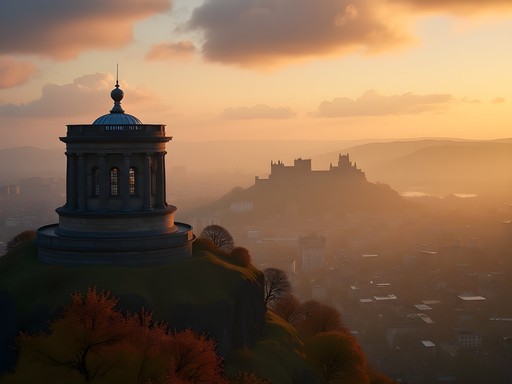






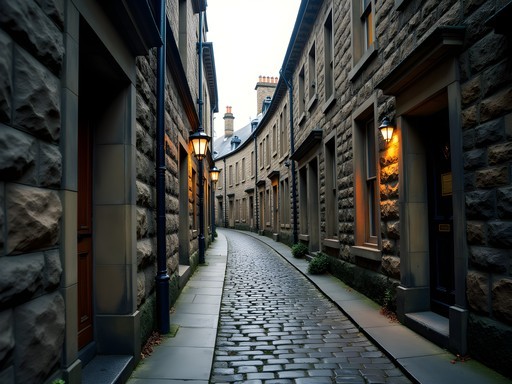
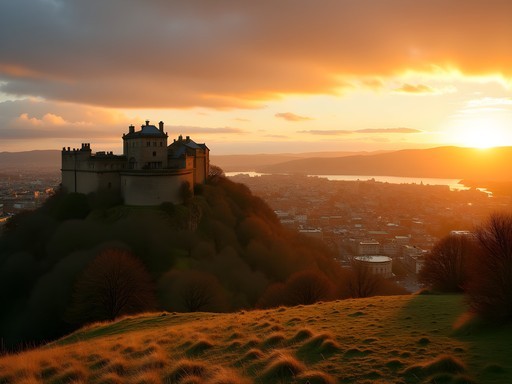


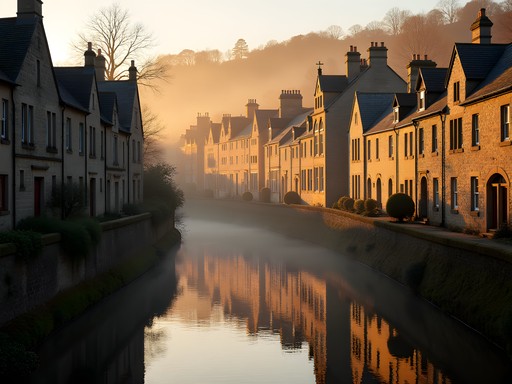

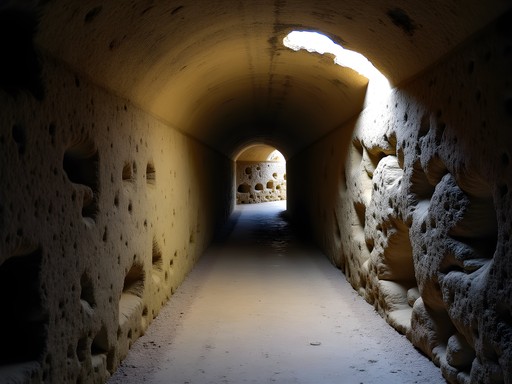

Comments
islandadventurer
Great post. Did both cities by train last year. Perfect comparison.
wanderluststar
Did you find Edinburgh or Dublin more expensive? Planning a trip but on a budget!
islandadventurer
Not the author but Dublin hit my wallet harder, especially accommodation.
Brooklyn Washington
Agree with @islandadventurer - Dublin tends to be pricier, especially during peak seasons. Edinburgh has more free museums too!
Hayden Butler
Brooklyn, you've captured the essence of these cities beautifully. Your section on 'Urban Fermentation' particularly resonated with me. I spent three weeks last autumn dividing my time between these capitals, and the contrast between Edinburgh's whisky culture and Dublin's evolving craft beer scene tells you so much about how these cities are evolving while honoring tradition. For visitors to Edinburgh, I recommend booking a private tasting at The Scotch Whisky Experience - they'll take you beyond the typical tourist experience if you call ahead. And in Dublin, skip Temple Bar for whiskey and instead try the back room at The Palace Bar on Fleet Street - where local literary figures have been drinking for generations. The bartenders there have stories that don't make it into any guidebook.
Brooklyn Washington
Thanks for those recommendations, Hayden! The Palace Bar was actually on my list but got cut from the final post. Their whiskey selection is incredible, and you're right about those bartenders - walking encyclopedias of Dublin literary gossip!
wanderone
Just booked my tickets after reading this! Can't wait to explore both cities!
Sophia Gomez
Brooklyn, your section on 'Urban Fermentation' resonated with me deeply. I was in Edinburgh for a business conference last year and extended my stay specifically to explore this aspect of the city. The contrast between the ancient volcanic geography and the vibrant modern food scene creates this unique energy you captured perfectly. I remember sitting in a café on Victoria Street, watching the light change on the colorful shopfronts while sipping locally brewed kombucha. The barista told me stories about how the underground vaults were once used for fermenting beer in the 18th century. For anyone visiting, I highly recommend the pocket guidebook - it's small enough to carry everywhere but packed with these hidden historical gems that connect past and present.
Casey Andersson
Brooklyn, your comparison of these two Celtic capitals brought back such vivid memories! I stayed at The Balmoral in Edinburgh last autumn and had a similar experience with the changing light. There's something about that northern latitude that makes the golden hour stretch forever in autumn. For anyone heading to Edinburgh, I highly recommend bringing a good pair of walking shoes - I tracked over 15 miles a day exploring those hills! I used my travel journal to sketch the cityscape from different elevations. The volcanic landscape creates such dramatic viewpoints that you just don't get in most European cities. Dublin's literary heritage is indeed the perfect complement to Edinburgh's geological drama - two sides of the Celtic soul.
wanderone
15 miles a day?! My feet hurt just thinking about it! 😅
moonmood
Those cobblestone streets in the rain... pure magic! 🌧️✨
vacationguide
Between Edinburgh and Dublin, which would you recommend for someone visiting in November? Worried about the weather but want the authentic experience!
Brooklyn Washington
November can be chilly and wet in both, but Edinburgh has more indoor activities clustered together. Dublin requires more walking between sights. I'd lean toward Edinburgh, especially with the early sunset creating that magical lighting on the old buildings. Just pack a good raincoat and waterproof boots!
vacationace
OMG your photos of Edinburgh Castle in that autumn light are STUNNING!! 😍 I've been dying to visit during fall and this just convinced me to book for next October! Did you use any special camera settings to capture that golden hour glow on the castle walls?
luckypro
I've been to both cities but never thought about the tea culture comparison you made. How would you say the tea experiences differ between Edinburgh and Dublin? Is one more formal than the other?
Venture X
Premium card with 2X miles, $300 travel credit, Priority Pass